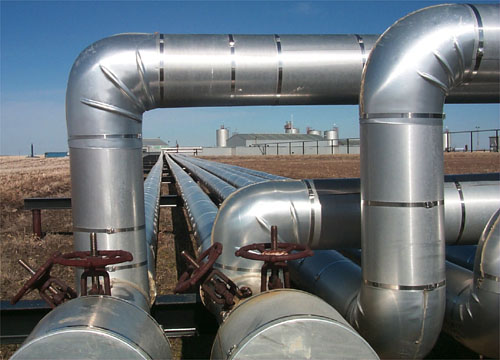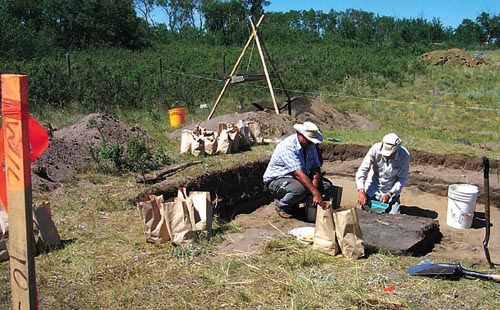



Impress Archeologists at Bodo Dig
Private archeologists working at a dig near Bodo were impressed with what they discovered and say the find will likely be declared a "significant archeological site" by the Alberta government. There are only about 30 to 40 such sites in all of Alberta. Terrance Gibson, Ph.D., of Alberta Western Heritage Inc., St. Albert who was at the site told The News in an interview a few kms southwest of Bodo on July 13, 2000 the find is "highly significant" because of the quantity of materials and that they are intact, well pre-served and defined. Gibson, who was also at a nearby site doing work several years ago (PN Jan. 17, 1996) smiled and said "we’re back—big time!" and pointed out that the Bodo find is one of the largest pre-historical archeological sites in Alberta. The archeologist, who has 13 years of formal training said that the Bodo site has the potential to be an "incredible interpretive centre" on par with the World Heritage site called Head-Smashed-In Buffalo Jump in southern Alberta or Wanuskewin Heritage Park (a national historic site) north of Saskatoon. The area is "just loaded with stuff." Bison bones, pottery and other items appear to be up to 1,000 years old. Gibson says that the pottery find is "quite rare" in Alberta. Metal arrow points have also been found that were likely in use 1500 to 1700 A.D. indicate Indians or "ancestral aboriginals" (now often called First Nations people) at that time had been trading with Europeans. The archeologists are not sure if the people were from the Blackfoot or Plains Cree nations or some other group. This area was the traditional boundary between the Blackfoot and the Cree. This particular site was used to trap bison in a pound where they were killed by shooting numerous small arrows into them. The people knew what they were doing, says Gibson. Other animals were likely brought there for butchering and bones like antelope, dog, wolf and birds are expected to be found. No human bones have been discovered.

Government archeologists who were invited to the site confirmed that the find is very important, and were very impressed? says Gibson. The team is now completing a major assessment and will then cap the area that they have been digging in (approximately 70 by 90 metres) with clay to preserve the relics underneath. "The site just keeps getting bigger and bigger" and up until now there had been no oil activity on the site since it was first discovered several years ago. Arrangements will be made to have satellite images of the area taken. By law, artifacts are property of the Crown which will wind up in the Provincial Museum, but if a local museum can demonstrate that they can properly look after the relics, they can all be returned to the community. Bags and bags of relics were sitting nearby an excavation site on Thursday and a car had already been "loaded" full of material and taken to a lab for analysis. "I’ve been working 25 years as an archeologist and this is as big as I’ve ever seen. It was amazing what we found here" says Gibson.
Return to provostnews.ca